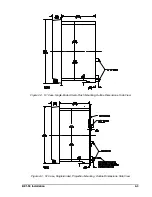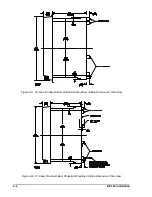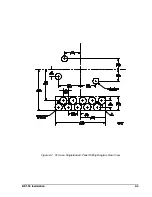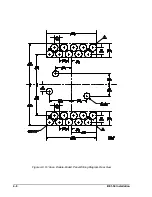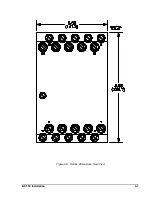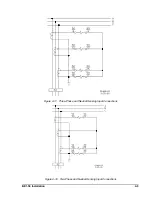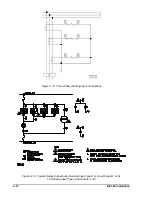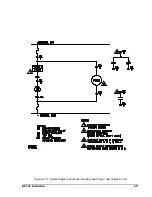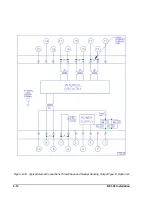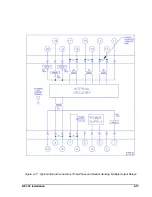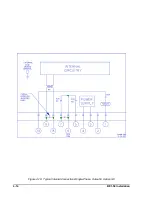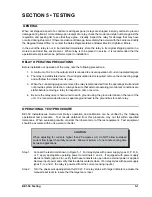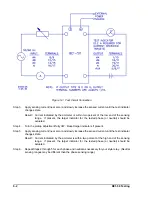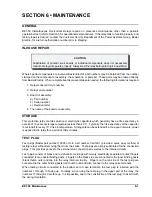
BE1-50 Maintenance
6-1
CAUTION
Substitution of printed circuit boards or individual components does not necessarily
mean the relay will operate properly. Always test the relay before placing it in operation.
SECTION 6 • MAINTENANCE
GENERAL
BE1-50 Instantaneous Overcurrent Relays require no preventive maintenance other than a periodic
operational test (refer to Section 5 for operational test procedure). If the relay fails to function properly, and
factory repair is desired, contact the Customer Service Department of the Power Systems Group, Basler
Electric, for a return authorization number prior to shipping.
IN-HOUSE REPAIR
Where special components are involved, Basler Electric part numbers may be obtained from the number
stamped on the component or assembly, the schematic, or parts list. These parts may be ordered directly
from Basler Electric. When complete boards or assemblies are needed, the following information is required.
1. Relay model and style number
2. Relay serial number
3. Board or assembly
a) Part number
b) Serial number
c) Revision letter
4. The name of the board or assembly.
STORAGE
This protective relay contains aluminum electrolytic capacitors which generally have a life expectancy in
excess of 10 years at storage temperatures less than 40
C. Typically, the life expectancy of the capacitor
is cut in half for every 10
C rise in temperature. Storage life can be extended if, at one-year intervals, power
is applied to the relay for a period of thirty minutes.
TEST PLUG
Test plugs (Basler part number 10095 or G.E. part number XLA12A1) provide a quick, easy method of
testing relays without removing them from their case. Test plugs are simply substituted for the connection
plugs. This provides access to the external stud connections as well as to the internal circuitry.
Test plugs consist of black and red phenolic moldings with twenty electrically separated contact fingers
connected to ten coaxial binding posts. Fingers on the black side are connected to the inner binding posts
(black thumb nuts) and tap into the relay internal circuitry. Fingers on the red side of the test plug are
connected to the outer binding posts (red thumb nuts) and also connect to the relay case terminals.
When testing circuits connected to the bottom set of case terminals, the test plug is inserted with the
numbers 1 through 10 facing up. Similarly, when using the test plug in the upper part of the relay, the
numbers 11 through 20 are faceup. It is impossible, due to the construction of the test plug, to insert it with
the wrong orientation.
Summary of Contents for BE1-50
Page 1: ... 05647 6 10 07 14 056 06 0 175 18 4 744 06 4 Publication 9 1710 00 990 Revision C 11 98 ...
Page 5: ...iv BE1 50 Introduction CONTENTS Continued SECTION 7 MANUAL CHANGE INFORMATION 7 1 Changes 7 1 ...
Page 12: ...2 2 BE1 50 Human Machine Interface Figure 2 1 Location of Controls and Indicators ...
Page 20: ...BE1 50 Installation 4 5 Figure 4 7 S1 Case Single Ended Panel Drilling Diagram Rear View ...
Page 21: ...4 6 BE1 50 Installation Figure 4 8 S1 Case Double Ended Panel Drilling Diagram Rear View ...
Page 22: ...BE1 50 Installation 4 7 Figure 4 9 Outline Dimensions Rear View ...

